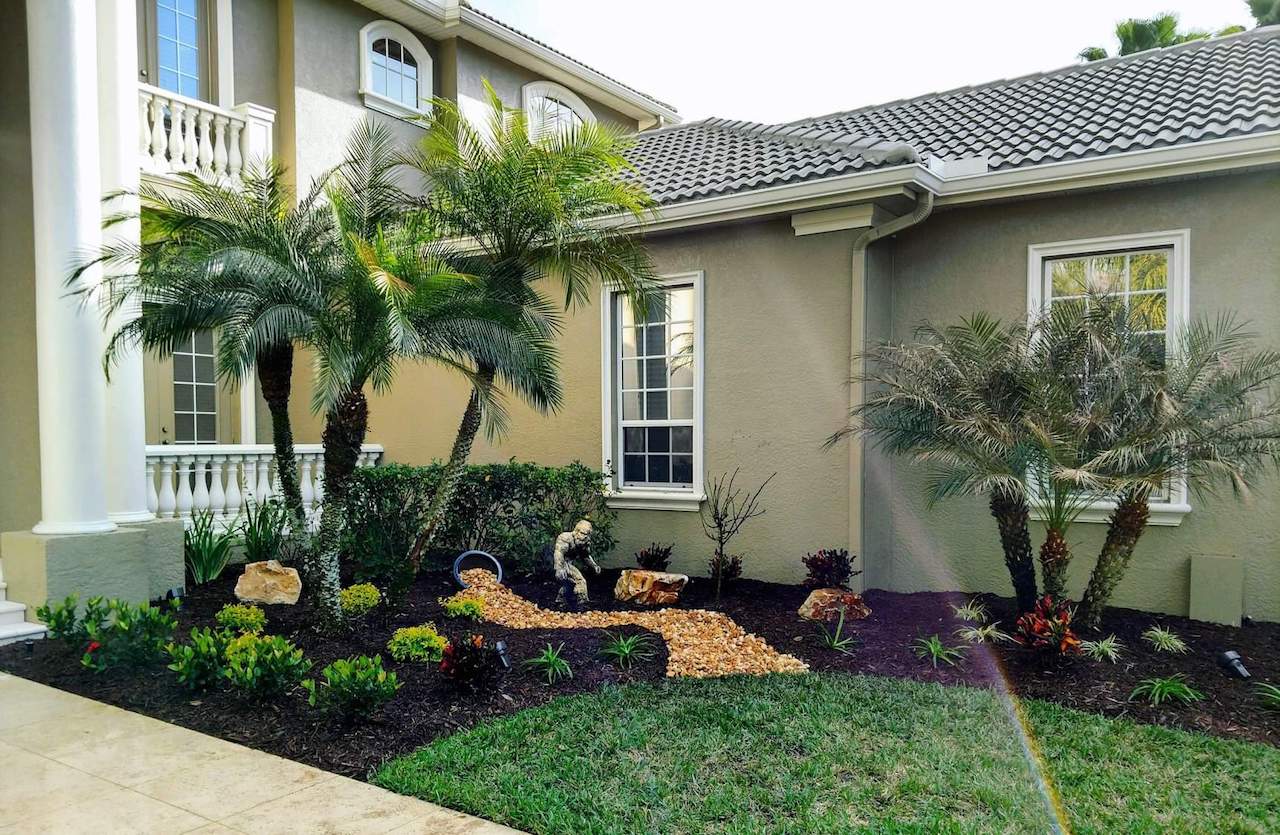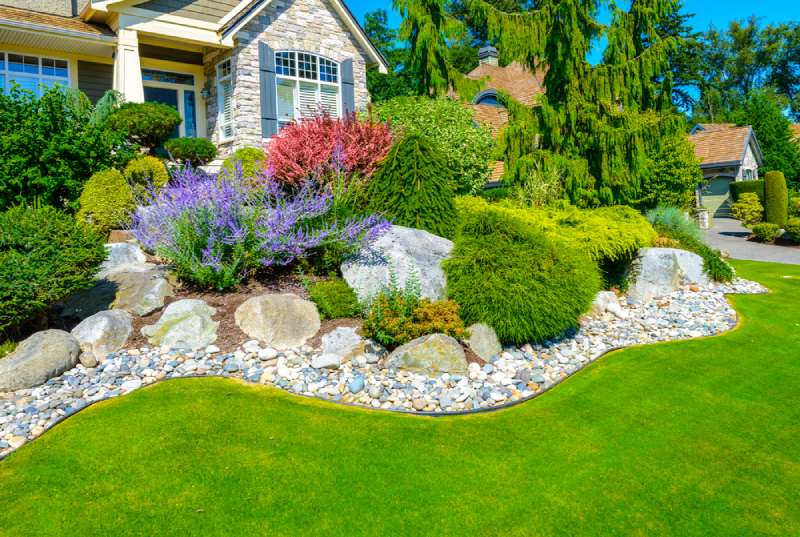A Comprehensive Overview to Creating and Implementing Effective Landscaping Solutions
The art and science of landscape design extend past mere appearances; they entail a thoughtful integration of design principles, environmental stewardship, and functional application. What approaches can one employ to make certain these landscapes not only thrive but also flourish in harmony with their surroundings?

Recognizing Landscape Design Concepts
One might question what foundational aspects contribute to reliable landscape style. At its core, effective landscape design pivots on a number of essential principles that guide the arrangement and option of aspects within an area. These concepts include unity, equilibrium, rhythm, and percentage, each offering to produce an unified outdoor setting.
Unity refers to the cohesive connection among numerous parts, making sure that they interact visually and functionally. Balance can be achieved via in proportion or asymmetrical arrangements, permitting the landscape to feel stable and inviting. Proportion involves recognizing the scale of aspects in regard to each various other and the surrounding setting, promoting aesthetic harmony and comfort.

Assessing Your Outdoor Space
Before carrying out the concepts of landscape design, a thorough evaluation of your exterior space is important. This initial analysis assists specify the extent of your landscaping project and makes certain that your layout lines up with the unique qualities of your building. Begin by evaluating the dimensions of your area, taking accurate measurements to understand the available area for various elements such as patios, pathways, and gardens.
Next, observe the existing attributes of your landscape, consisting of topography, soil quality, and water drainage patterns. These variables considerably influence plant choice and placement. Additionally, evaluate the sunshine exposure across different areas throughout the day, as this will affect the kinds of plants that prosper in your garden.
Take into consideration the microclimates produced by structures, trees, and other obstacles, as they can impact temperature and wetness levels. Take note of any existing plants or hardscape elements that you desire to eliminate or retain. This extensive evaluation lays the groundwork for a efficient and educated landscaping option, making certain that your layout is not just visually pleasing but lasting and also useful for years ahead.
Lasting Landscape Design Techniques
Including sustainable landscape design strategies is essential for developing an eco liable outside space. These practices not only promote environmental balance however additionally improve the functional and aesthetic worth of a landscape. One fundamental method is the application of native plants, which require much less water and maintenance while supporting important site local wild animals. Implementing effective irrigation systems, such as drip watering, lessens water waste and makes certain that plants get ample dampness.

Another reliable method is the strategic placement of bushes and trees to supply all-natural windbreaks and shade, therefore lowering energy expenses (Palm Desert Landscaping). Rain gardens can be incorporated right into the landscape design to take care of stormwater overflow successfully, filtering system pollutants prior to they get in waterways
Selecting the Right Plants
Selecting the right plants for your landscape is critical to attaining both aesthetic appeal and eco-friendly consistency. The procedure begins with an understanding of your local environment, dirt conditions, and the specific microenvironments within your landscape. Analyzing aspects such as sunshine direct exposure, dampness degrees, and existing flora will assist you select plants that flourish in your distinct setting.
Think about integrating indigenous plants, as they are well-adapted to local conditions, call for less upkeep, and assistance regional wildlife. Furthermore, choosing a varied range of varieties can improve biodiversity while reducing the danger of illness and insect episodes. It is important to assess the growth routines, growing durations, and seasonal colors of possible plants to develop a vibrant and cohesive landscape.
Moreover, think regarding the planned usage of the room; for i loved this circumstances, if the location will certainly experience high foot traffic, choose resilient ground covers. By attentively picking plants that align with both your environmental demands and aesthetic objectives, you can create a sustainable landscape that not only boosts your residential property however also adds favorably to the surrounding ecological community.

Execution and Upkeep Methods
Once the appropriate plants have actually been chosen for your landscape, the focus changes to efficient implementation and ongoing upkeep techniques. Successful setup starts with correct site prep work, which includes dirt testing to establish nutrient levels and pH, followed by changing the dirt as needed. Very carefully prepare plants according to their growth habits and light needs, making certain adequate spacing to advertise healthy and balanced development.
Irrigation is a critical aspect of implementation. Develop a watering timetable that thinks about the certain needs of each plant varieties, adjusting for seasonal YOURURL.com adjustments. Making use of drip irrigation systems can enhance water efficiency and lower runoff.
Upkeep strategies need to be carried out to guarantee the long life and vigor of your landscape. Regular tasks include weeding, mulching, and trimming to regulate development and prevent condition. Fertilizing needs to be performed based on soil examinations, offering the essential nutrients without over-fertilizing.
Checking for diseases and parasites is important; early detection can protect against substantial damages. Seasonal changes to maintenance routines, such as winterizing perennials and preparing for spring growth, will certainly guarantee that your landscape stays healthy and balanced and aesthetically appealing year-round.
Verdict
Successful application and continuous maintenance better guarantee the long life and vitality of landscapes. By incorporating these aspects, landscapes can be changed into attractive, useful atmospheres that promote biodiversity and add positively to neighborhood well-being.
One may wonder what fundamental elements add to efficient landscape design. At its core, successful landscape layout pivots on several essential principles that lead the plan and choice of components within an area.Choosing the right plants for your landscape is important to attaining both aesthetic charm and ecological harmony. It is essential to review the growth practices, growing periods, and seasonal colors of possible plants to produce a vibrant and cohesive landscape.
Once the appropriate plants have been picked for your landscape, the focus shifts to reliable execution and continuous maintenance strategies.
Comments on “Top Tips for Enhancing Your Yard with Palm Desert Landscaping Ideas”